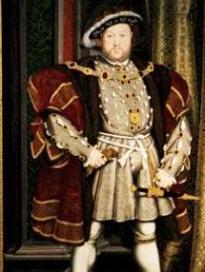Gaton, Australia
MY RAILWAYSTREET
tahun 1995 saya dan keluarga saya (bapak, ibu, kakak, saya) pergi ke Gatton, Australia.
 it was cool! (blog ini saya tulis bukan untuk pamer atau negatif thought lainnya, blog ini cuma buat mengingat kembali masa kecil saya dan membantu orang buat tahu keadaan Gatton khususnya tahun 1990an)
it was cool! (blog ini saya tulis bukan untuk pamer atau negatif thought lainnya, blog ini cuma buat mengingat kembali masa kecil saya dan membantu orang buat tahu keadaan Gatton khususnya tahun 1990an)
Childhood
some pics about me.
Seperti keterangan di bawah gambar, saya adalah bocah yang memakai baju biru dan celana garis-garis. Itu adalah si pani ketika berumur dua tahun (1995).
The House of Hanoverians
The Stuarts
- Great-great-grandson of Henry VII
- Born: 19 June1566 at Edinburgh Castle, Scotland
- Parents: Mary, Queen of Scots, and Henry Stewart, Lord Darnley
- Ascended to the throne: 24 March 1603 aged 36 years
- Crowned: 25 July 1603 at Westminster Abbey, also as James VI of Scotland at Stirling Castle
- Married: Anne, Daughter of Frederick II of Denmark and Norway
- Died: 27 March 1625 at Theobalds Park, Hertfordshire, aged 58 years
- Succeeded by: his son Charles
- Born: 19 November 1600 at Dunfermline Palace, Scotland
- Parents: James I (VI of Scots) and Anne of Denmark
- Crowned: 2 February 1626 at Westminster Abbey
- Married: Henrietta Maria, Daughter of Henri IV of France
- Died: 30 January 1649 at Whitehall, London (executed), aged 48 years
- Buried at: Windsor
- Succeeded by: his son Charles II
Was executed as a result on 30 January 1649.
- Oliver Cromwell (1653-58)
- Richard Cromwell (1658-59)
 Charles II 1660 – 1685
Charles II 1660 – 1685- Born: 29 May 1630 at St. James Palace
- Parents: Charles I and Henrietta Maria
- Crowned: 23 April 1661 at Westminster Abbey, and at Scone as King of Scots, 1 January 1651, aged 20
- Married: Catherine of Braganza
- Died: 6 February 1685 at Whitehall Palace, London, aged 54 years
- Buried at: Westminster
- Succeeded by: his brother James II
- Younger brother of Charles II
- Born: 14 October 1633 at St. James Palace
- Parents: Charles I and Henrietta Maria
- Crowned: 23 April 1685 at Westminster Abbey
- Married: (1) Anne Hyde, (2) Mary, Daughter of Duke of Modena
- Succeeded by: his daughter Mary and son-in-law William of Orange
Mary: St James Palace, London
Parents: William: William II of Orange and Mary Stuart;
Mary: James II and Anne Hyde
Crowned: 11 April 1689 at Westminster Abbey, when William was 38 and Mary was 26
Married: William married Mary, daughter of James II
Died: 8 March 1702 at Kensington Palace (William), aged 51 years
Mary died 1694,
Buried at: Westminster (both)
Succeeded by: Mary’s sister Anne
- Sister of Mary II
- Second daughter of James II
- Born: February 6, 1665 at St. James Palace, London

- Parents: James II and Anne Hyde
- Ascended to the throne: March 8, 1702 aged 37 years
- Crowned: April 23, 1702 at Westminster Abbey
- Married: George, son of Frederick III of Denmark
- Children: Eighteen, including miscarriages and still-born, of whom only one William survived to age of 12
- Died: August 1, 1714 at Kensington Palace , aged 49 years
- Buried at: Westminster
- Succeeded by: her 3rd cousin George of Hanover
The Tudors
- Great-great-great-grandson of Edward III
- Born: January 28, 1457 at Pembroke Castle, Wales
- Parents: Edmund Tudor, Earl of Richmond, and Margaret Beaufort
- Ascended to the throne: 22 August 1485 aged 28 years
- Crowned: 30 October 1485 at Westminster Abbey
- Married: Elizabeth of York, daughter of Edward IV
- Children: Three sons and four daughters. Only 4 of whom survived infancy; Arthur, Margaret, Henry and Mary
- Succeeded by: his son Henry VIII4
(1) Catherine of Aragon 1509-1533 Divorced
(2) Anne Boleyn 1533-1536 Beheaded
(3) Jane Seymour 1536-1537 Died
(4) Anne of Cleves 1540 Divorced
(5) Catherine Howard 1540-1542 Beheaded
(6) Catherine Parr 1543-1547 Survived
Henry had six wives because….
He had the first wife because he was betrothed to her by his father.
He had the second wife because he fell in love and also needed a legitimate male heir.
He had the third wife because he still needed a male heir.
He had the fourth wife because of diplomatic reasons.
He had the fifth wife because he fell in love again.
He had the sixth wife because he was old and sick and needed a companion and nurse who wouldn’t give him too much trouble.
Henry’s main aim was to make sure that the Tudors would keep on ruling England after he died. Henry believed that only a boy could inherit his kingdom. But his son Edward ruled only for six years.
His six wives:
1. Chaterine of Aragon
4.Anne of ClevesHenry wanted to make a ‘good’ marriage this time and decided to look all over Europe for a bride. He sent painters to paint any eligible brides so he could see what they looked like.A picture was shown to him of Anne of Cleves and he agreed to marry her without ever having met her!When she arrived in England, Henry was very keen to meet her but she didn’t speak any english and didn’t know who he was. She was rather rude to the fat man that came to see her (Henry) and ignored him.Henry stormed out shouting ‘I like her not!’He is said to have found her repulsively ugly, and called her a horse! He couldn’t break his promise to marry her but it only lasted six months.20 days after his second divorce, Henry married his fifth wife.
5.Katherine HowardKatherine was a cousin of Anne Boleyn and was only about 16 when she came to court. No-one knows her actual birthdate, but she was still a teenager when they married. (He was 49!)She was lively, pretty,kind and a bit of a ‘bird brain’ but Henry thought she was perfect.However she was previously, secretly engaged to one man and possibly a second one too. When the King found out he
chopped both the men’s heads off, followed by Katherine’s in 1542.The following year he married for the last time.
- Age 9-15
- Born: 12 October 1537 at Hampton Court
- Parents: Henry VIII and Jane Seymour
- Ascended to the throne: 28 January 1547 aged 9 years
- Crowned: 19 February 1547 at Westminster Abbey
- Married: Never Married
- Children: None
- Died: 6 July 1553 at Greenwich Palace
- Buried at: Westminster
- Succeeded by: his half sister Mary
Edward was never a healthy King and died aged only 15 years.
- Age 37-42
- Born: 8 February 1516 at Greenwich Palace
- Parents: Henry VIII and Catherine of Aragon
- Ascended to the throne: 19 July 1553 aged 37 years
- Crowned: 1 October 1553 at Westminster Abbey
- Married: Philip II of Spain
- Children: None
- Died: November 17, 1558 at St James Palace, London, aged 42 years
- Buried at: Westminster
- Succeeded by: her half sister Elizabeth
- Age 25-69
- Born: 7 September 1533 at Greenwich Palace
- Parents: Henry VIII and Anne Boleyn
- Ascended to the throne: 17 November 1558 aged 25 years
- Crowned: 15 January 1559 at Westminster Abbey
- Married: Never Married
- Children: None
- Died: 24 March 1603 at Richmond Palace, Surrey, aged 69 years
- Buried at: Westminster
- Succeeded by: her 3rd cousin James of Scotland













